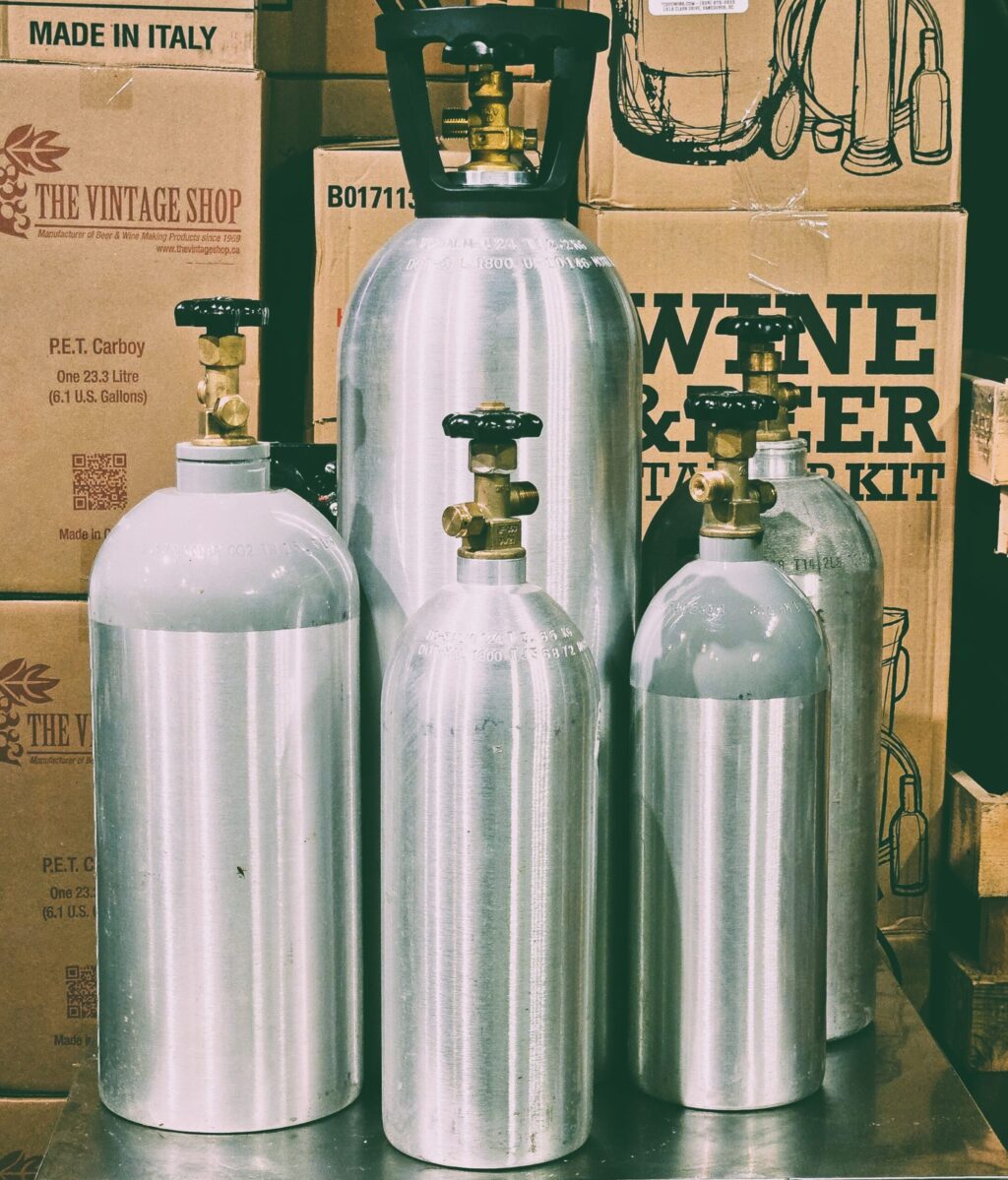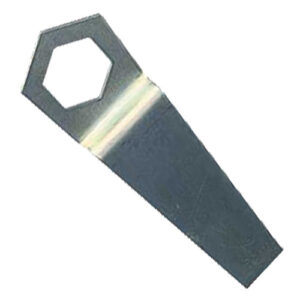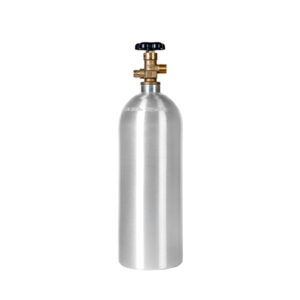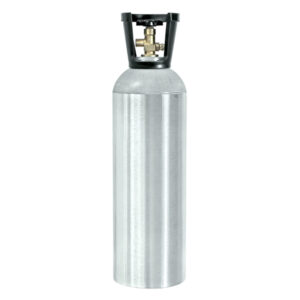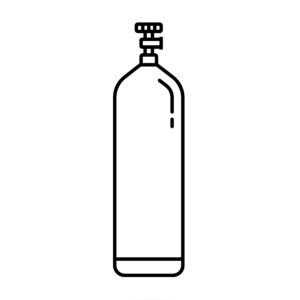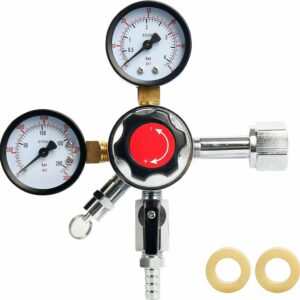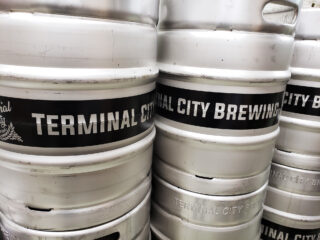By popular demand, we now carry 5lb, 10lb and 20lb full CO2 cylinders. Bring us your empty tank, leave with one of our full ones – how easy is that? No waiting around, no worry about your tank being expired, we’ll take almost any CO2 cylinder. See the links below for pricing!
Using your CO2 Tank
Here’s a few simple tips to help bring success!
NEVER use Teflon tape on your tank threads
Teflon tape is designed for tapered threads, like water pipes. With those types of fittings, the threads are tapered (meaning they get wider the more you tighten down the fitting) and the threads themselves are designed to seal. CO2 tanks use CGA320 fittings – these have straight threads which are not designed to hold pressure and instead rely on a CO2 washer or integrated regulator seal to seal the regulator to the tank. The back side of the regulator nut has no seal between it and the regulator stem; taping up the threads doesn’t seal the back side at all making it pointless as any CO2 that is getting past the actual regulator seal is going to escape either way.
We regularly get tanks in that have excessive tape on the threads – this is a great way to trash your regulator! On a warm day your tank can be putting out as much as 1800 PSI, it will have no trouble pushing tape fragments in to the inner passages of your CO2 regulator.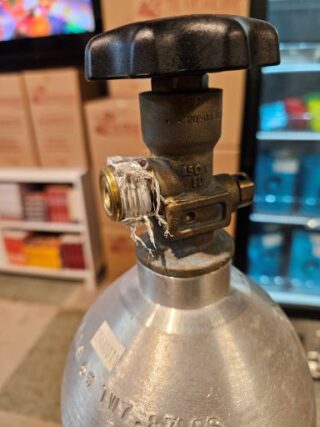
Tighten Appropriately
Most new regulators are “washerless” and include a built-in seal on the end of the regulator. These seals are made of relatively soft rubber and will be damaged if the regulator is overtightened. Many regulators do not have replaceable seals, though you can usually add a hard plastic seal once the built-in one has worn out.
Older regulators and ones intended for commercial service often require washers – you can tell the difference between these two pictures. The regulator on the left has an integrated seal and doesn’t require a washer (though we include washers with our regulators!) unless there’s damage to the seal. The regulator on the right requires a washer always, there is no built-in sealing surface. We carry replacement CO2 tank washers too. Hard plastic washers should be tightened firmly while integrated washers usually only need to be snugged up.
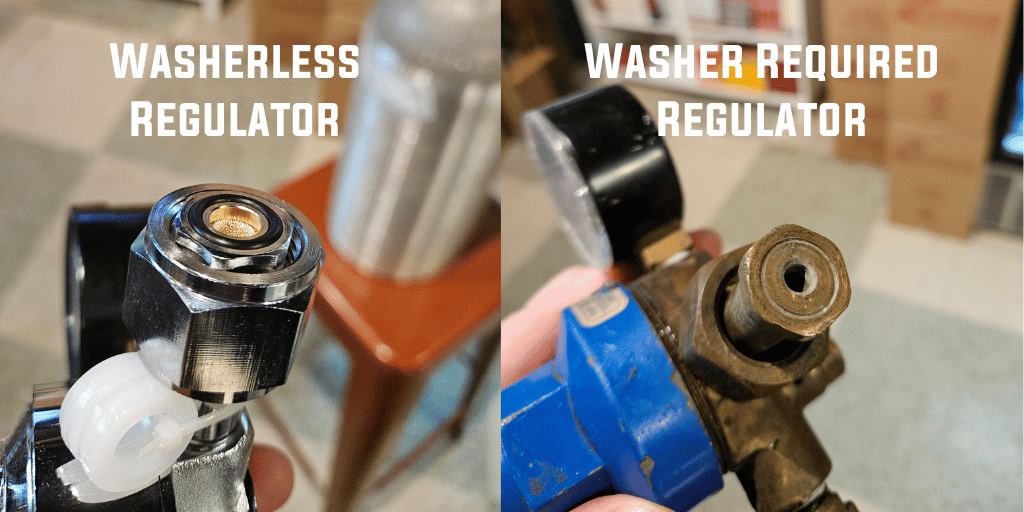
Keep Upright
A full CO2 tank is 80% liquid CO2 and 20% gaseous CO2. The liquid sits at the bottom, the gas sits on the top. When the tank is supplying CO2, the gas above the liquid leaves the cylinder and enters the regulator. If you turn your tank on its side, liquid CO2 will leave the tank and may destroy your regulator. CO2 tanks also have an integrated pressure relief on the valve assembly, if the tank is on its side or upside down it can vent liquid CO2 which will instantly boil and expand drastically. Liquid CO2 can cause severe frostbite.
We recommend making sure your tank is secured at all times. As the tank empties it becomes lighter, it is very easy to knock over a partly empty tank. Your regulator tends to take the brunt of the impact should your tank fall over which leads to broken gauges or at worst a severe leak.
Open Tank Valve Fully
CO2 tank valves (and propane tank valves for that matter) should always be either fully open or fully closed. While there is packing around the valve stem where it enters the valve, there is also a positive seal inside the valve that only makes contact when the valve is fully open. A half open valve can create a maddeningly difficult to troubleshoot leak – always open your tank valve fully.
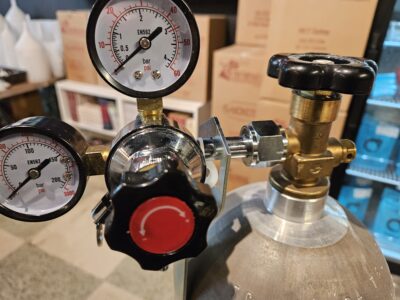
Fill By Weight
CO2 tanks are filled by weight. Need to know if your tank is full or not? Simply weigh it on a scale. Most tanks have a marking at the top starting with ‘TW’ (Tare Weight) followed by the weight of the empty tank. Subtract the Tare Weight from the measured weight and you know how much gas you’ve got. Some tanks will have just a ‘T’, some will have both, some will only have an imperial weight, some will only have metric, some will have both. Some common tank tare weights for aluminum tanks:
- 5lb Tanks – Approximately 8lb / 3.6kg
- 10lb Tanks – Approximately 14lb / 6.4kg
- 20lb Tanks – Approximately 25lb / 11.3kg
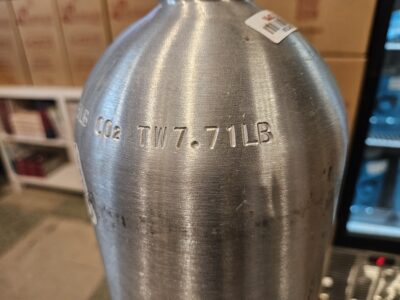
My Gauges Aren’t Moving?
The pressure inside your tank will stay constant as long as there is still liquid CO2 in the tank. The tank pressure gauge (if you have one) will change depending on the temperature of the tank, but will usually stay rock solid in the same position until the tank is nearly empty. Once the last of the liquid CO2 has boiled off, the remaining gaseous CO2 will continue to supply pressure until it is gone. You’ll notice the tank pressure gauge drop rapidly once there’s no liquid CO2 left.
I Think I Have A Leak!
A 5lb CO2 tank should be sufficient to serve 5-8 kegs of beer depending on your serving pressure. If you’re getting less than that, you have a leak somewhere. Homebrew (Corney) kegs are notorious for leaks as they have many different potential leak spots. Sankey kegs are reasonably reliable, ensure your keg coupler is in good condition and fittings are tight.
Two hard-to-find potential leak locations are the regulator itself (they have a rubber diaphragm internally used for pressure regulation) and internal leaks in the gauges. Both of these types of leaks are hard to find since the leak tends to happen internally in the body of the unit but a thorough spray with soapy water can help pinpoint things. While there are repair kits available for some brand-name regulators like Tap-Rite, it’s often not worth the cost of repairing an old regulator compared to replacing it with a new one. Regulators and gauges both have moving parts internally and do eventually fail.
Do CO2 Tanks Expire?
CO2 tanks require recertification every 5 years. Fortunately our tank swap program takes away all your worries about expiry dates – we’ll happily accept expired as well as valid tanks. Expired tanks cannot be filled until they are inspected by a licensed inspector who will stamp a new inspection stamp on the tank. Factory stamps look like the one below – this tank was certified November 2022 and will need recertification November 2027.
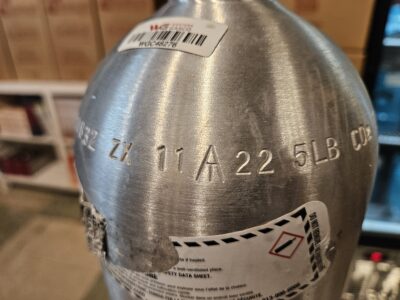
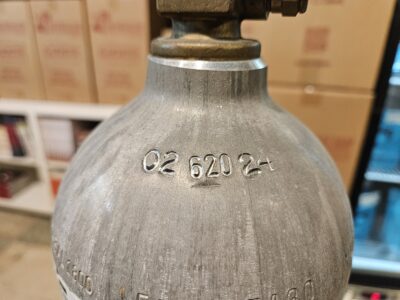
– Bryn at Terminal City Brewing

